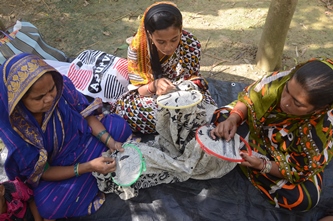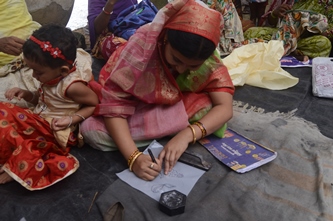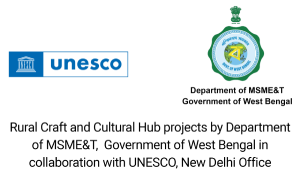Process
The traditional process of Kantha making was of arranging layers of old cloth together and sewing them on the edges. Once this basic structure was done, they used to embroider the designs. In contemporary products, the used clothes have been replaced by silk or cotton base material.
Conceiving the design: The production process starts with getting the fabrics, threads for embroidery, and conceiving the design consisting of different motifs, stitches, and colour schemes.
Making the design: The Kantha artists create their own designs from their imagination or by taking inspiration from some source. Once they have decided on the design, they draw the motifs on sheets of tracing paper, and then perforate that paper with a needle along the lines of the motifs. The colour combinations are also decided at this stage.
Printing the design on fabric: The perforated paper is then spread over the cloth where the stitch is to be done, and coloured powder mixed with kerosene is spread on the paper so that the impressions of the motifs get imprinted on the cloth. This print becomes their guiding lines for the stitches.
Embroidering the design: The borders of the motifs are first stitched on to the fabric with a single colour and running stitch. After the entire design comes alive in its outline stitches, the motifs are filled with the chosen colours and variety of stitches, suited best to the motifs.
Washing the final product: After completion, the embroidered piece is washed to get rid of the printed lines, and readied for the market.





